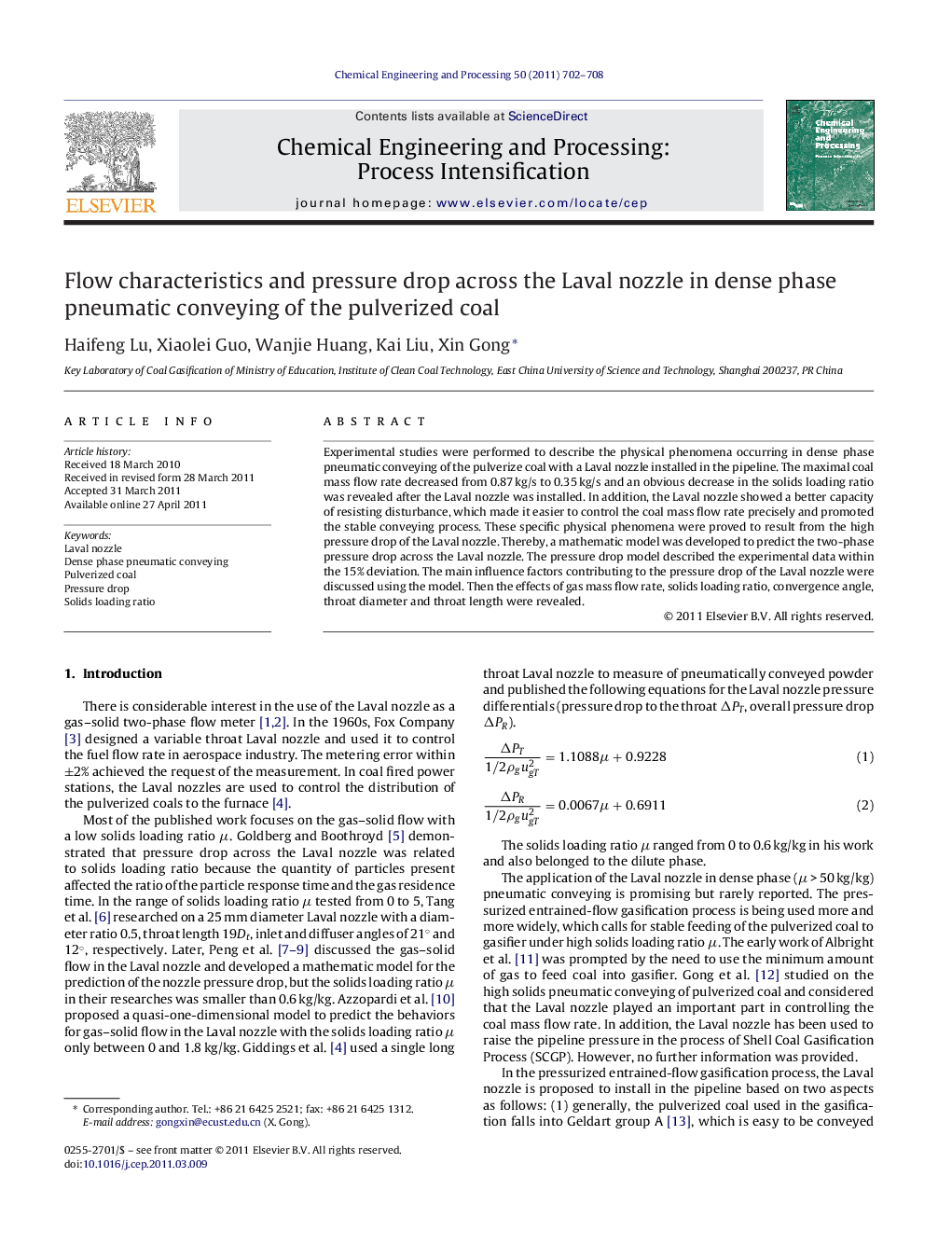| Article ID | Journal | Published Year | Pages | File Type |
|---|---|---|---|---|
| 687189 | Chemical Engineering and Processing: Process Intensification | 2011 | 7 Pages |
Experimental studies were performed to describe the physical phenomena occurring in dense phase pneumatic conveying of the pulverize coal with a Laval nozzle installed in the pipeline. The maximal coal mass flow rate decreased from 0.87 kg/s to 0.35 kg/s and an obvious decrease in the solids loading ratio was revealed after the Laval nozzle was installed. In addition, the Laval nozzle showed a better capacity of resisting disturbance, which made it easier to control the coal mass flow rate precisely and promoted the stable conveying process. These specific physical phenomena were proved to result from the high pressure drop of the Laval nozzle. Thereby, a mathematic model was developed to predict the two-phase pressure drop across the Laval nozzle. The pressure drop model described the experimental data within the 15% deviation. The main influence factors contributing to the pressure drop of the Laval nozzle were discussed using the model. Then the effects of gas mass flow rate, solids loading ratio, convergence angle, throat diameter and throat length were revealed.
► The application of Laval nozzle in dense phase pneumatic conveying is promising. ► The installation of Laval nozzle makes it easier to control the coal flow rate. ► The pressure drop model describes the experimental data within ±15% deviation. ► Factors affecting the pressure drop of the Laval nozzle were discussed.
